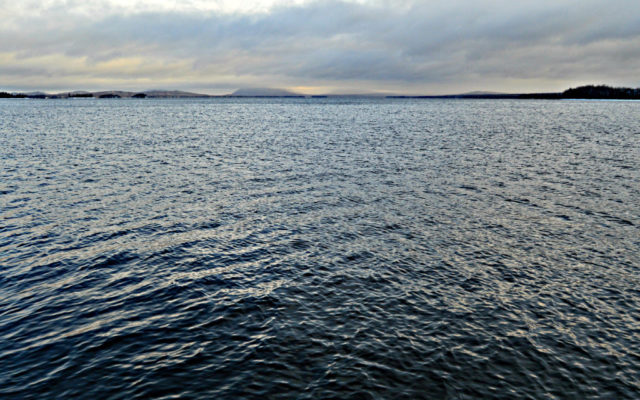
Moosehead Lake fishing report
If any of you frequent the East Outlet Dam on the East Outlet of the Kennebec River, you’ve probably seen IFW Fisheries biologists sending coworkers and assistants down into a fishway and netting up fish to collect data. This is known as the East Outlet Fishway trap.
Every other year the biologists gear up and place a screen and fyke in the last chamber of the fishway. The fyke, which is like a minnow trap, allows the fish to enter the last chamber of the fishway but not exit, while the screen blocks the fish from moving up into Moosehead Lake.
The East Outlet Fishway sits on the East Outlet of the Kennebec River and was opened for business on July 11, 1958. When the fishway was in its first stages, the Moosehead Lake region fisheries biologists observed that salmon were naturally moving down the outlet to spawn, but these fish were often blocked by obstructions like dams along the way. When their natural runs are blocked, these fish are forced to move to another body of water. This fishway was built so smaller salmon could navigate up the river and enter the lake. Without the East Outlet Fishway, very few of the juvenile salmon would make it to the lake. And with that, the fishway was born to allow smaller salmon and other game fish to enter Moosehead Lake and still have access to the river system to increase production in the Moosehead Lake fishery.
Spawning and reproduction areas for both landlocked salmon and brook trout are known to be very limited in the East Outlet; they represent less than 0.5 percent of the total three-mile stretch of river. There is adequate nursery habitat for small brook trout and salmon parr to grow up in. In the early 1990s the Federal Energy Regulatory Commission (FERC) relicensed the East Outlet Fishway Project and created more benefits to both the fish and anglers in the area. When the relicensing occurred, the Moosehead Lake region fisheries biologists identified two areas where habitat for brook trout and salmon could be enhanced. These enhancements included creating more spawning/reproductive habitat as well as some sheltered habitat for the newly hatched salmon and brook trout fry during high flow events. These enhancements, which were funded and supported by Kennebec Water Power Company, created a spawning channel that is downstream from the Beach Pool, and a refuge channel around a small island downstream.
Before these habitat improvements, the Moosehead Lake region fisheries biologists would only see an average of 17 wild landlocked salmon per day when tending the fishway trap. After the habitat improvements, the region’s biologists are now seeing an average of 30 wild landlocked salmon per day. These are significant improvements and have allowed these smaller fish to flourish and reach maturity to contribute to the Moosehead Lake fishery.
Personally, having worked on the East Outlet Fishway trap in 2016, and now in 2018, we are seeing much larger salmon than just two years ago. A good majority of the fish we are collecting data from are wild. We have observed a significant increase in the young wild salmon moving up the river and into Moosehead Lake which is great news for the fishery.